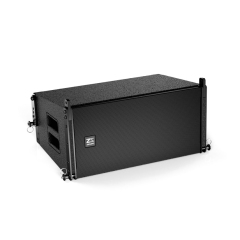Using a subwoofer speaker with an audio system involves proper placement, calibration, and connection to provide long-lasting fine sound quality. Step 1: Where to place the subwoofer in your room The bass could get a boost of up to 6 dB near or against the wall through boundary reinforcement but this can also lead to bloated over blown sound. A corner will magnify this even more, the difference leading to as much as a 9 dB bass boost which is where it can start to get out of hand.
The Size of the Subwoofer and its Power A 12-inch subwoofer with a power of at least about 300 watts RMS will give you the proper cross-over range as well to not intrude on other frequencies and disrupt them from your home theater listening. If you have larger rooms, 15-inch driver and a subwoofer with up to 500 watts RMS could be the appropriate amount of horsepower in order to fill out the space fully. With these parameters in place the subwoofer should output clean, undistorted bass at significant volume levels.
In most cases, the subwoofer should be connected to your system via the LFE (Low-Frequency Effects) output of your AV receiver, a dedicated connection for processing deep bass frequencies that allow subwoofers to deliver their best work. This connection provides the subwoofer a line-level bass signal, so it can stay more in its wheelhouse. For those systems without an LFE output, Alternative 2: A line-level connection from the receiver's pre-out can be used alternately to Alternatifve1 at this point (gondola), or you could use speaker wire directly from your main speakers into these since they are powered.
Calibration is key to a balanced sound. The bulk of modern AV receivers are equipped with standardised calibration systems that measure the room's acoustics, enabling easy adjustment of subwoofer settings to match. These systems can seamlessly determine the ideal crossover frequency, usually around 80 Hz where the subwoofer begins to play while ensuring that there is a smooth handoff and soundstage.
Another important stage is to set the phase and volume of the subwoofer. Setting phase control: One of these lets you adjust the subwoofer's phase between 0° and 180°, allowing it to play in sync with your main speakers (as opposed to against them), so that certain bass frequencies aren't "nulled" out. Volume set up is a tricky because you must balance the subwoofer so it's heard and not just felt, without over-powering everything else.

Seasoned industry professionals stress the significance of seamlessly introducing a subwoofer without falling into typical pitfalls. As per Sound & Vision Magazine "A subwoofer that isn't well integrated will make more of a mess than create thunder and bang, in the end bringing little if anything to your listening experience." And this statement highlights the importance of accurate calibration and thoughtful placement in order to make the subwoofer help, not add confusion.
Placement then is another consideration for subwoofers as well, which you may have to experiment with. The subwoofer crawl involves putting the +w in your primary listening position, then crawling around to find were it sounds best. When that location is found, you place the subwoofer in this area. This method allows you to look for the best placement in relation of bass symmetry throughout listening room.
The answer in many cases is yes — and for a larger or acoustically challenging room, adding a second subwoofer can help give you even better bass response. Packing two subwoofers can even the level of low bass around a room, which ought to fix some peaks and nulls you may get from one. This double standard gives often leads to a less good overall sound feeling and immersiveness on bass.
A subwoofer speaker is an important part of the audio system for those who want to experience the best sound. Though placement, power rating, connection and calibration to your system is what you would consider when making the subwoofer induce some depth and impact on your audio setup leading it towards a more lush listening experience.